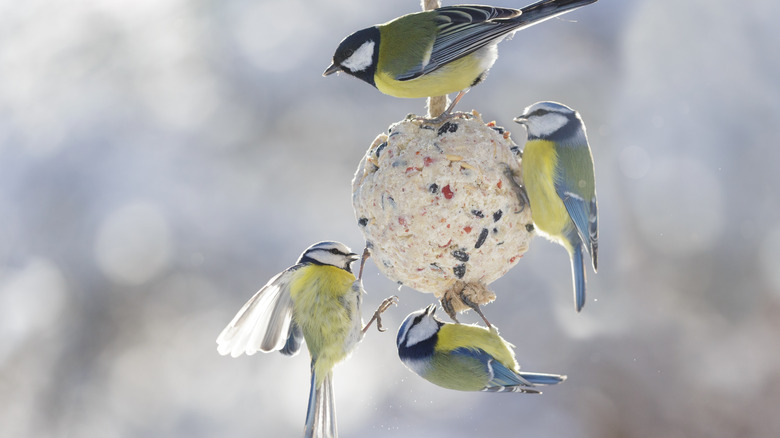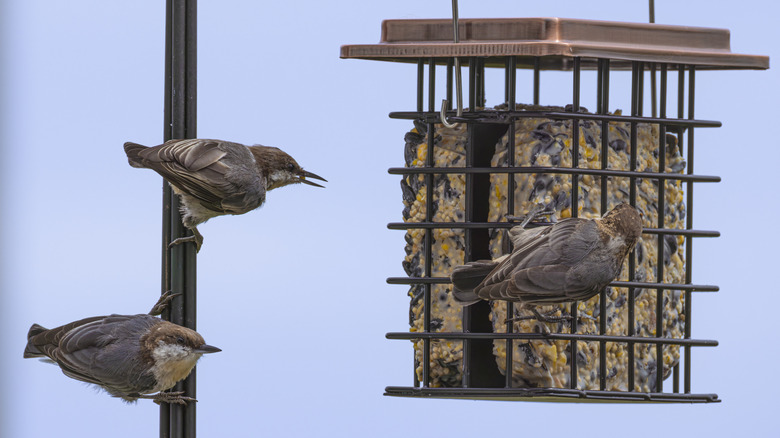Mistakes You're Making When Putting Out Suet This Winter
Suet is a good source of essential and easily digestible calories and fat that can be difficult for birds to find in winter. Not only does the calorie-dense treat feed local birds, but it also helps you attract birds to your yard during the winter season. Traditional suet combines rendered animal fat with other ingredients, including birdseed, fruit, dried mealworms, oats, and nuts. It holds up well in winter, but it's not the best for the hotter months of the year as it can melt when its above 70 degrees Fahrenheit. However, there are potential issues caused by improper suet use, even in winter. Perhaps one of the biggest mistakes is allowing birds to get too close to greasy suet.
Fat is essential inside a bird's body, but it's potentially deadly if it gets on feathers. That's why hanging suet out where birds can land on it is a major mistake you should avoid. A bird that lands directly on a suet ball or cake could get the fat on its feet. From there, the fat could transfer to the feathers during preening. Fat-coated feathers don't provide the insulation or protection from water that birds need to survive in colder weather. Soft, greasy fat sources in suet are more dangerous than harder, drier options.
Positioning the feeder in a dangerous location puts birds at risk while they're eating. They could become the victim of predators if you place suet low to the ground without nearby shelter. Old, rancid suet or a dirty feeder could also spread diseases and make your backyard birds sick, so it's important to regularly check on and maintain your feeders.
Offering suet safely
Limit birds' contact with suet by using a durable metal suet feeder. A squirrel-proof option keeps critters away that could contaminate the food source. Squirrel baffles on the post also help. Clean the feeder at least every few weeks, soaking it in warm soapy water and rinsing it well.
Dry, hard, crumbly suet, such as that made of fat from the loins of cows and pigs, reduces the chances of the grease transferring to birds' feathers from their beaks and feet. Check the ingredients to avoid flour, corn, and other fillers that lack nutritional value. You can also DIY a suet block to feed your outdoor bird friends. Mix equal parts of rendered fat and peanut butter with no added sugar. Birds and Blooms recommends using one cup each of peanut butter and fat plus 1/2 cup of cornmeal, 1/4 cup of oats, and 1/4 cup of add-ins, such as birdseed.
Finding the best places to put a suet hanger is essential for bird safety. Hang it high enough (a minimum of 5 to 6 feet above the ground) to keep birds away from predators, which could include your pets. A shaded area is ideal, as direct sunlight could melt the suet even in the winter. Nearby trees within about 10 feet also give birds a sense of security, and they can find the feeder more easily since they gravitate toward trees for foraging anyway. To avoid collisions with windows, place feeders either within 3 feet of a window or over 15 feet away.

